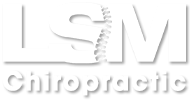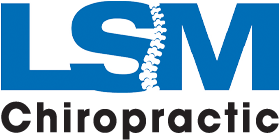Injury Risk of Specializing in One Sport

In today’s competitive athletic environment, it's not uncommon for young athletes to focus on one sport year-round. While sport specialization can lead to skill mastery and greater competitive opportunities, it also comes with increased risks—especially regarding injuries. Repetitive movement patterns, lack of cross-training, and insufficient rest can place excessive stress on specific muscle groups and joints. That’s where chiropractic care comes in—not just as a tool for recovery but as a key player in injury prevention and long-term performance.
The Risk of Overuse Injuries
When athletes train exclusively for one sport, they repeat the same motions repeatedly. A tennis player’s serve, a pitcher’s throw, a swimmer’s stroke—all these actions put repeated strain on the same muscles, tendons, and joints. Over time, this can lead to overuse injuries such as tendonitis, stress fractures, and joint dysfunction. Without variety in movement or sufficient rest, the body doesn’t have time to recover and adapt. In younger athletes whose bodies are still developing and whose growth plates are still open, these risks are even more significant.
Specialization can also lead to muscular imbalances. For instance, a soccer player may develop powerful quadriceps but have underdeveloped hamstrings or glutes, increasing the risk for knee injuries. A crew athlete may develop hypertonicity on the involved side of rowing. Without proper alignment and balance, the athlete’s body becomes more prone to breakdown—just like a car with worn-out tires or poor alignment.
How Chiropractic Care Helps
Chiropractic care addresses these issues head-on. Through spinal and joint adjustments, chiropractors help restore proper alignment and movement to the body. This improves biomechanics, reduces compensation patterns, and allows athletes to move more efficiently and safely.
But chiropractors do more than just adjustments. They assess the athlete’s overall movement patterns, muscle activation, and posture to identify weaknesses and imbalances. By catching these issues early, they can intervene with corrective strategies that reduce the risk of injury. Strategies might include soft tissue therapy, mobility exercises, functional movement training, and advice on cross-training or rest periods.
For example, a chiropractor working with a baseball pitcher might notice limited shoulder mobility or poor thoracic spine rotation—two factors that could lead to shoulder strain or elbow injury. With targeted treatment and mobility work, the chiropractor can help the athlete improve motion and reduce stress on vulnerable joints.
Recovery and Long-Term Wellness
When injuries happen, chiropractic care also plays a valuable role in recovery. Chiropractors support healing by improving circulation, reducing inflammation, and restoring joint function. They also work collaboratively with athletic trainers, physical therapists, and coaches to ensure a safe and structured return to play.
What sets chiropractic apart is its proactive, whole-body approach. It’s not just about treating pain; it’s about optimizing function. For specialized athletes, this can make a world of difference—not just in staying injury-free but in reaching their highest potential.
Conclusion
While sport specialization can help athletes excel, it carries real risks that athletes shouldn’t ignore. Chiropractic care offers a unique blend of prevention, treatment, and performance enhancement that supports the specialized athlete every step of the way. Whether on the field, court, or track, having a chiropractor as part of the team is an investment in long-term health and success.
The information, including but not limited to, text, graphics, images and other material contained on this page are for informational purposes only. The purpose of this post is to promote broad consumer understanding and knowledge of various health topics, including but not limited to the benefits of chiropractic care, exercise and nutrition. It is not intended to provide or be a substitute for professional medical advice, diagnosis or treatment. Always seek the advice of your chiropractor, physician or other qualified health care provider with any questions you may have regarding a medical condition or treatment and before undertaking a new health care regimen, and never disregard professional medical advice or delay in seeking it because of something you have read on this page.




